Italian, 16th C.?
Catalog 1. Violin – probably Cremona / Brescia, 16th Century
This violin shows all of the typical characteristics of the work of Andrea Amati (ca. 1505-1577), one of the most illustrious violin-makers of all times. But although the contours of the body and of the sound holes exactly match those of Amati, the violin is most likely a contemporary copy of Amati. It may be rightfully claimed that Andrea Amati single-handedly created the violin in its present form, which has remained unaltered since the 16th C. Recent investigations have revealed that Andrea Amati, who signed his first labels as “Amadi”, may have been a Spaniard of Arabian descent (Andreas Hamad), whose family may have been expulsed during the fanatical religious persecutions from his native Valencia to Italy. Welcomed by the open and free spirit of the Venetian Republic, he eventually settled in Cremona to found the Art of Violinmaking as we know it today. Amati’s instruments demonstrate a level of artistic excellence which can be compared to the achievements in painting, sculpture, architecture and literature of the Era of Humanism.
Our violin resembles closely the Amati model, although the work on the scroll and pegbox point rather towards Brescia or Milano. We thank Andrew Dipper, an English expert, for the attribution.
Before Restoration |
With Renaissance set-up (after Brothers Amati) |
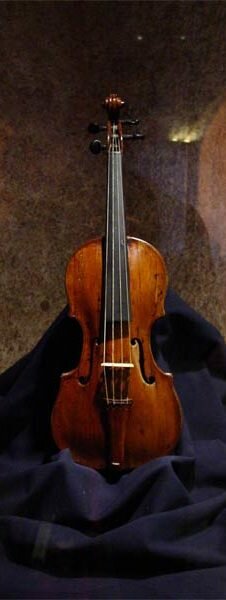 |
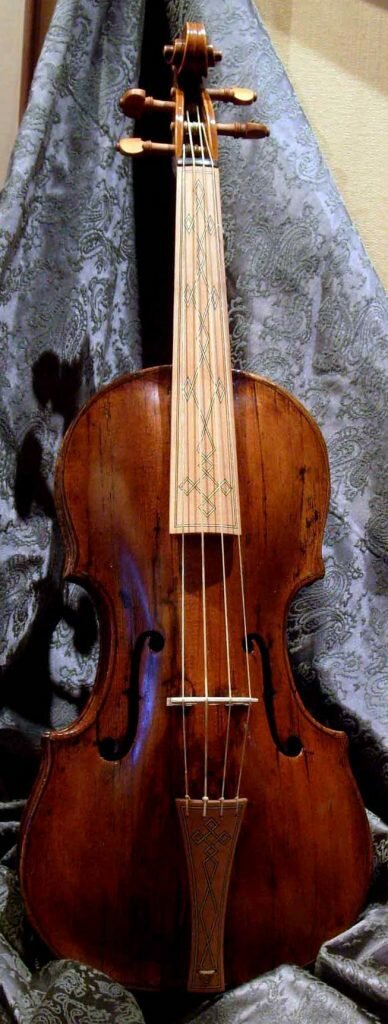 |
Before Restoration
 |
 |
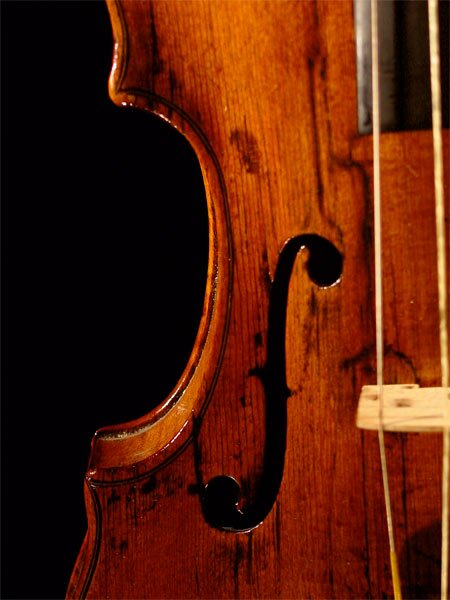 |
|
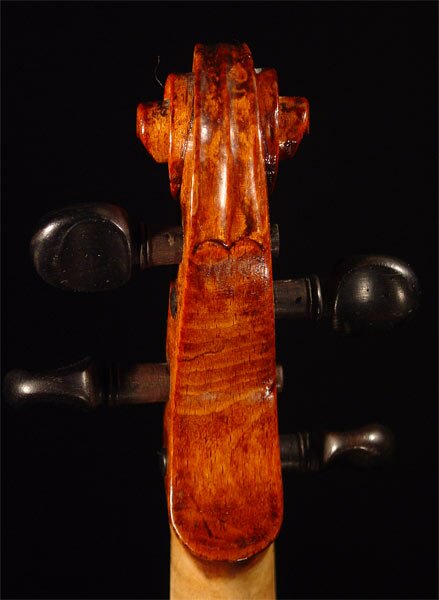 |
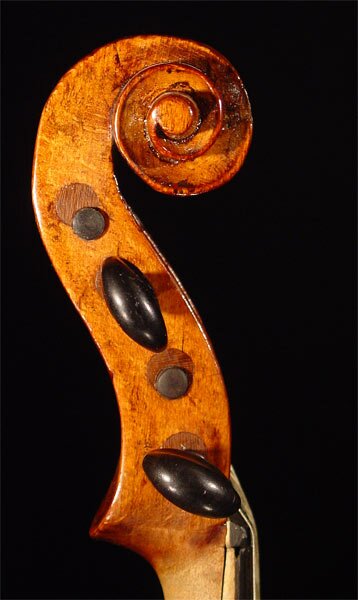 |
We are awaiting dendrochronological confirmation for more precise information on this instrument.
This violin was very obvioulsy made on the pattern of Andrea Amati of Cremona. One expert claims that the back may be indeed genuine, by Andrea Amati. For comparison, see the photo below of a violin known to have been built by this maker. The contours of the two instruments and the f-holes can be made to precisely overlap. The head of our instrument is not by Andrea Amati but is also very old. Similar heads can be found in Northern Italy (for example, on instruments by the Testores).
A new head, copy of Andrea Amati has now replaced this one. (See first photo, above)
We are very thankful to Roland Houël, Lyon, France, for his help in illustrating this comparison.
Photos of the violin by Andrea Amati in the Museum of Cremona:
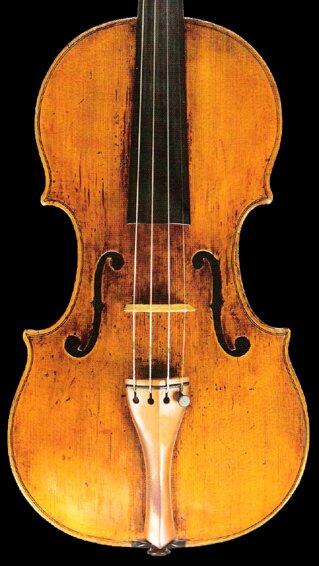 |
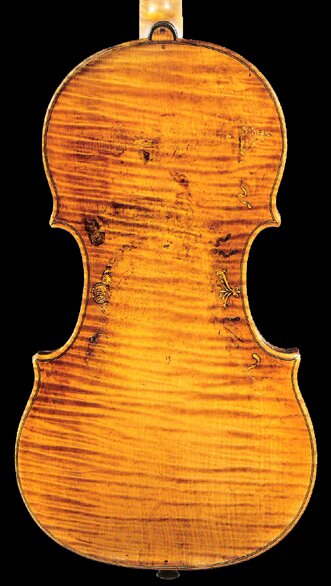 |
For comparison, try superimposing these photos with the ones in the Vázquez Collection:
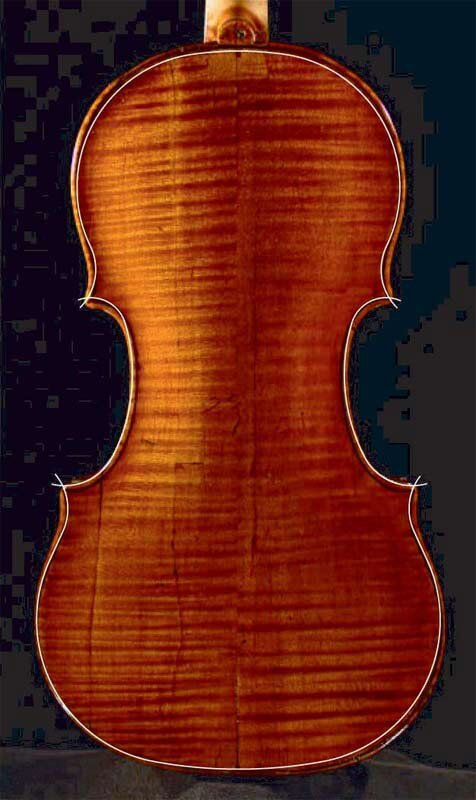
In white: tracing of the outline of the purfling of the Andrea Amati violin superimposed on the body of our violin (courtesy of Roland Hoüel). The purfling normally runs along the ribs of the violin, thus revealing the shape of the form on which the violin was built. This violin seems to have been built on the same form as the one by Andrea Amati.
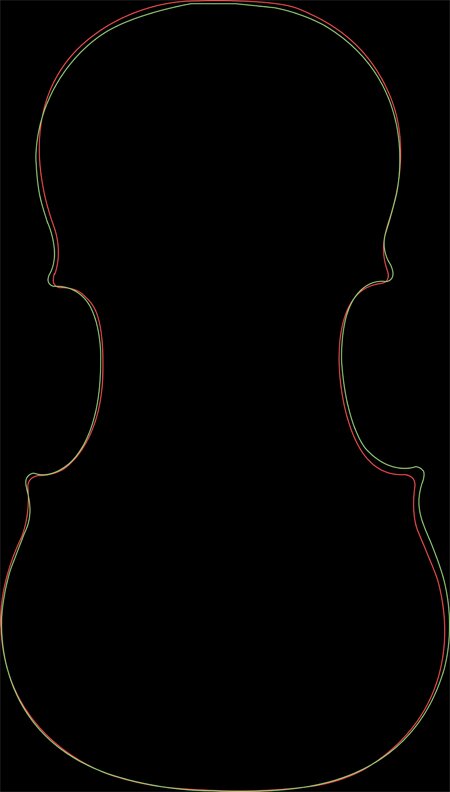 |
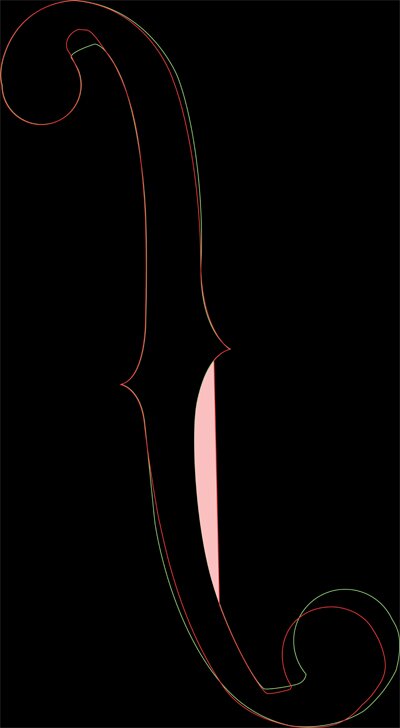 |
Comparison of the contours of the two violins:red: Orpheon, green: Cremona |
Comparison of the f-holes(missing part of one f-hole has been shaded in) |
Designs and study: Roland Houël, Mirecourt, France
See also: Violoncello by Roland Houël after Andrea Amati
| Body length | mm |
|
Upper width
|
mm |
| Middle width | mm |
| Lower width | mm |
| Rib height | mm |
| String length | mm |